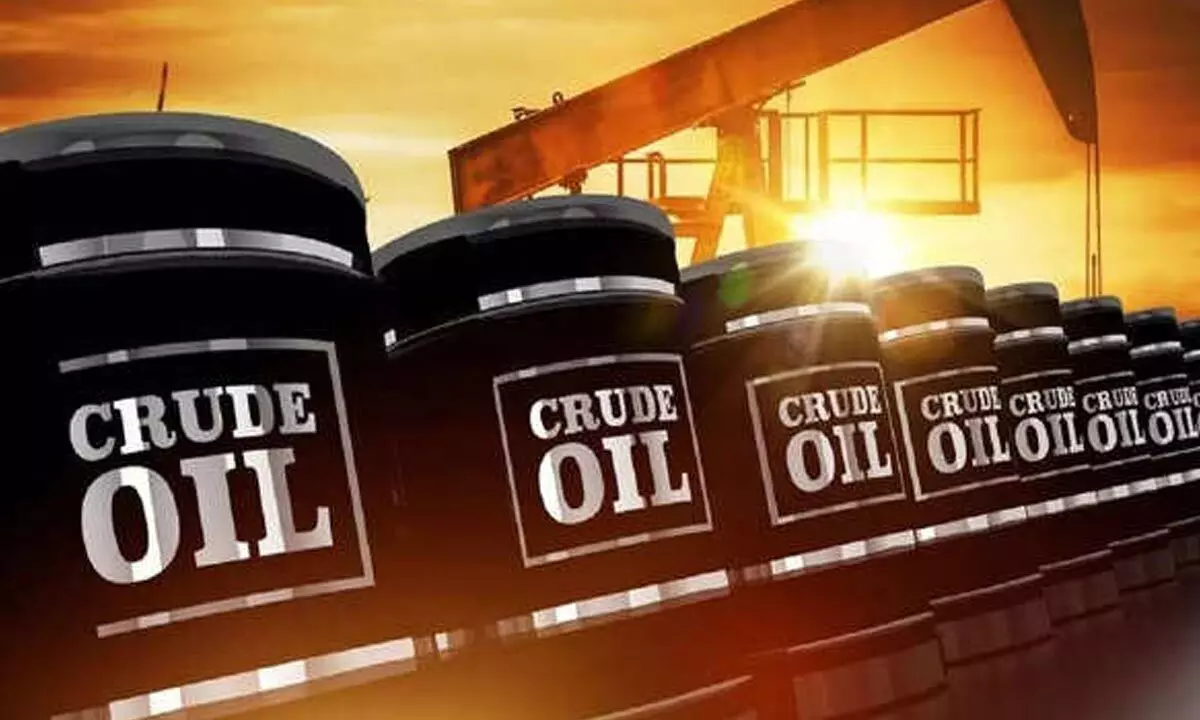India stands to benefit with softening of oil prices

India stands to benefit with softening of oil prices
Cuts in retail prices of petrol, diesel and cooking gas unlikely
World oil prices have been moderating in recent weeks, thereby deepening the softening trend that began in mid-2022. After reaching a peak of 124 dollars per barrel last June, prices have slowed down gradually to around 100 dollars in the second half of the year. For the past few months, however, crude oil had been ruling at 85 to 90 dollars per barrel. It has dipped even further in recent weeks with the benchmark Brent crude being brought down to less than 75 dollars per barrel.
This is a rare bit of good news on the hydrocarbons front for the Indian economy which relies for 85 per cent of its fuel needs from abroad.It is bound to ease worries as the exchequer has been faced with a rising oil import bill over the past two years. After the sharp fall in demand during 2020 due to Covid, prices began to harden in 2021.
The oil cartel OPEC, which joined hands with other major oil producers like Russia to become OPEC Plus, also ensured that supplies were curtailed leading to oil prices ruling at around 70 to 80 dollars per barrel. As a result, the cost of oil imports nearly doubled in fiscal 2022 to 119 billion dollars compared to 62 billion dollars in fiscal 2021. The situation altered suddenly, however, last February following the Ukraine war. Oil prices skyrocketed to 130 dollars but then moderated to around 110 dollars per barrel. This has become a heavy burden for a country so greatly reliant on imported fuel supplies.
Latest estimates are that oil imports for the first six months of fiscal 2023 will cost as much as 90 billion dollars. Had prices remained at such high levels for the rest of the year, the bill could have potentially risen to 180 billion dollars. The moderation in prices in the second half of 2022-23 was largely due to the stringent zero-Covid policy in China that created an economic slowdown and consequent fall in demand from the world's biggest crude oil importer. In addition, fears of recession due to aggressive monetary tightening by central banks globally roiled markets.
For India, the situation would have worsened last year but for the availability of Russian oil that was purchased at a considerable discount to global prices. When supplies began to be sourced from Russia, it was offering crude oil 16 dollars cheaper than the then average price of 110 dollars per barrel. The discounts continued since then ranging from eight dollars to 12 dollars per barrel. India is also reported to have bought Russian crude at prices lower than the 60 dollars per barrel cap set by western countries. The net result is that the country has saved over three billion dollars by buying more Russian oil.
As for the continuing fall of oil prices in recent weeks, it is mainly due to worries over bank failures creating a ripple effect after the collapse of Silicon Valley Bank. It was followed by crash in stocks of the flagship Swiss bank Credit Suisse, which has since been taken over by another Swiss bank, UBS. Even so, contagion fears persist and they are creating ripples in oil markets.
The big question now for consumers is whether cuts can be expected in retail prices of petroleum products like petrol, diesel and cooking gas. It looks as if they may wait in vain as oil marketing companies that purchase imported crude did not hike rates last year when world prices shot up. Instead, they absorbed the losses and continued to supply products at the same rate. There was an effort to moderate retail prices and contain inflationary pressures by cutting excise duties on products in May. But now that oil prices have fallen and oil companies are making some profits, these will be used to recoup past losses.
These losses are sizable, judging by latest reports of companies like Indian Oil Corporation,HPCL and BPCL. They incurred losses is estimated at Rs. 21,201 crore from April to December 2022.
There will also be other economic benefits to the decline in international prices, including easing of inflationary pressures and strengthening of the rupee. In addition, a lower oil import bill will reduce pressure on the exchequer and enable the Finance Minister to keep the fiscal deficit within the budgetary target of 6.4 per cent for fiscal 2023.
Going forward, dire predictions have been made by several investment banks about oil prices climbing to 100 dollars per barrel by the end of the year. These are, at best, informed guesses about the state of international oil markets. Even Goldman Sachs has just revised its projections downwards to 94 dollars. Given what has happened over the past year, forecasting oil price movements is an extremely risky venture. Few would have anticipated the outbreak of a war in Europe that pushed up prices to stratospheric levels. Neither would the sudden slowdown in China have been a possibility considered by any forecaster for the latter half of the year. For the time being, Indian policymakers can rest easy in the expectation that lower global oil prices are a reality at least for the near and medium term.
















